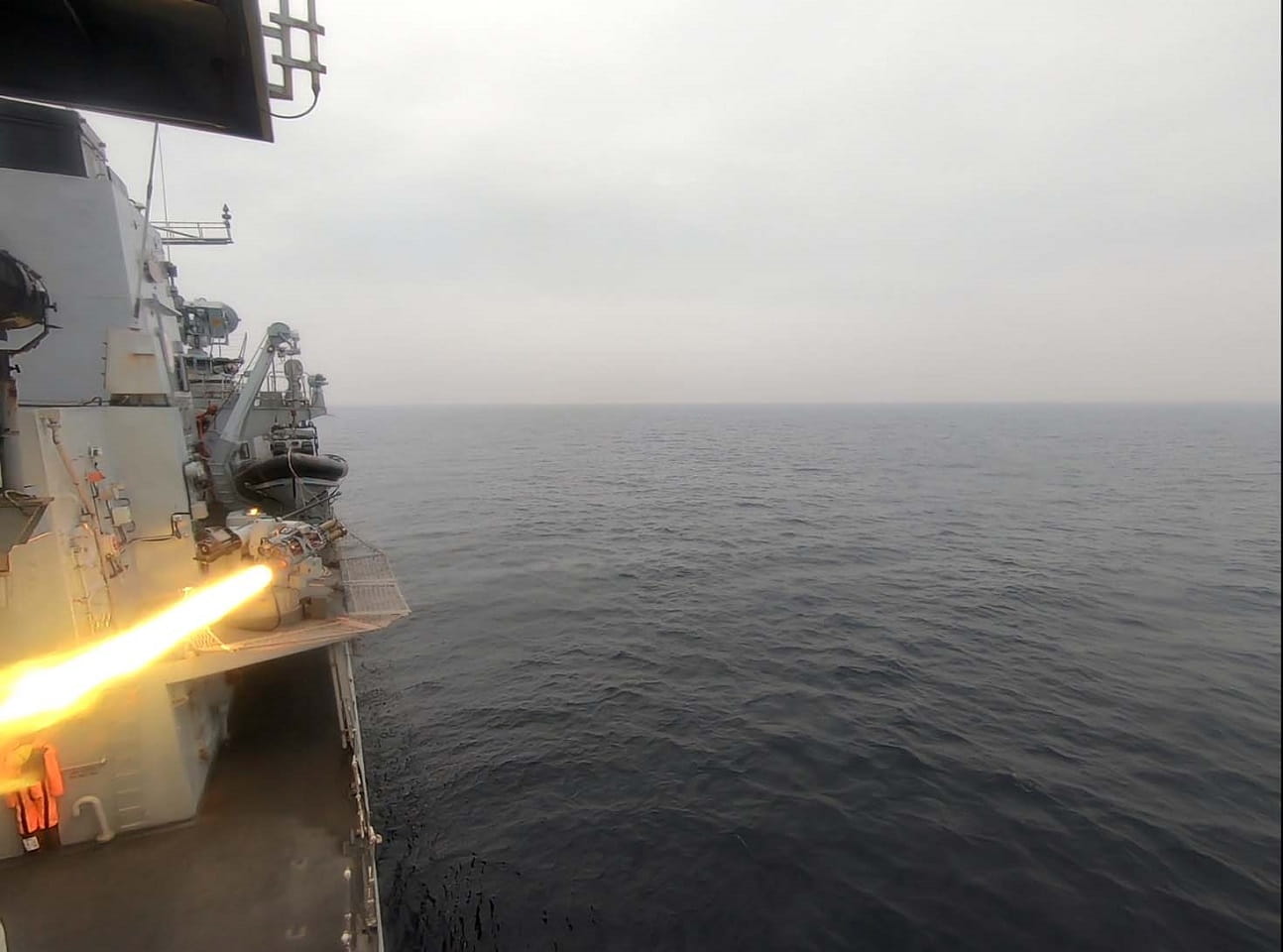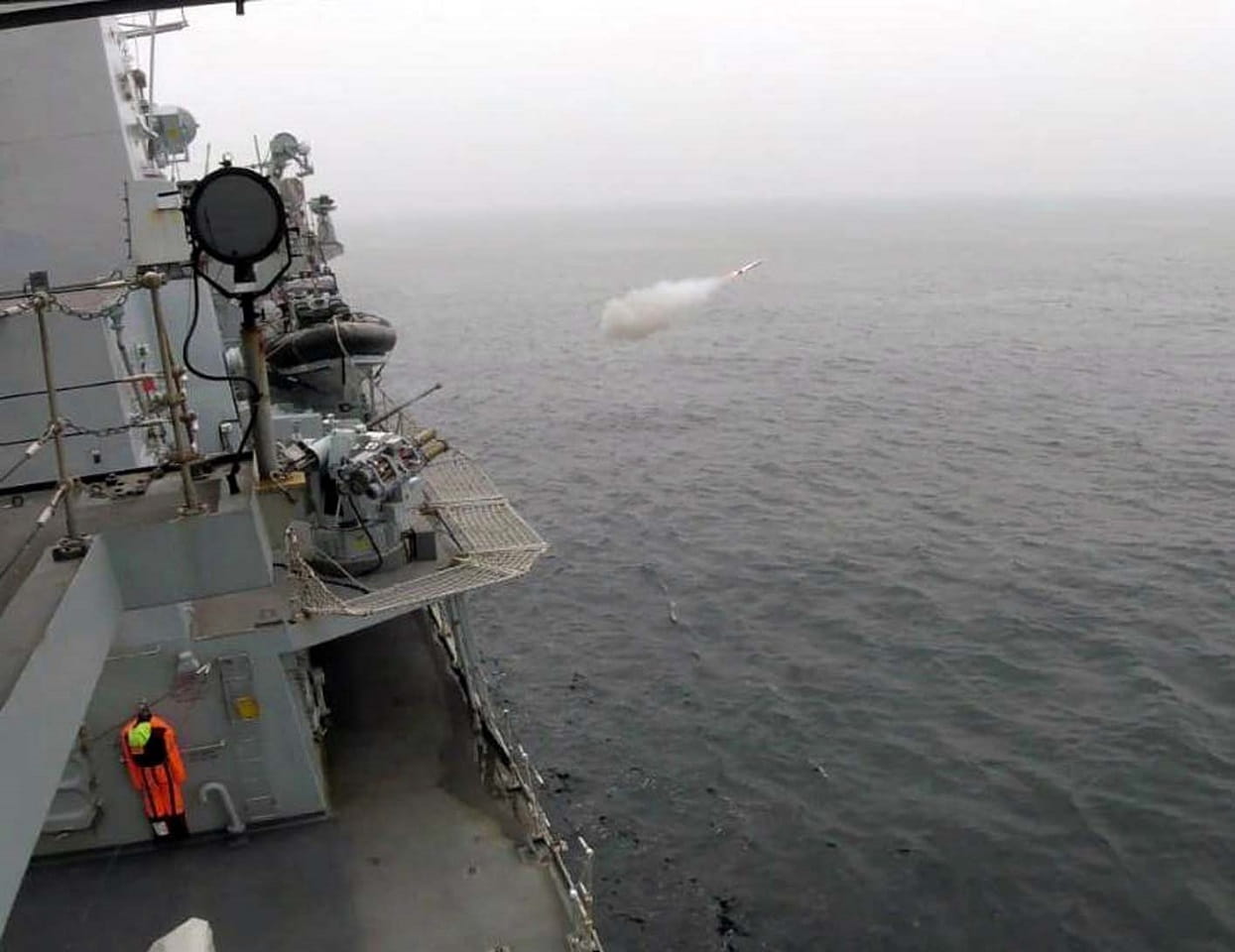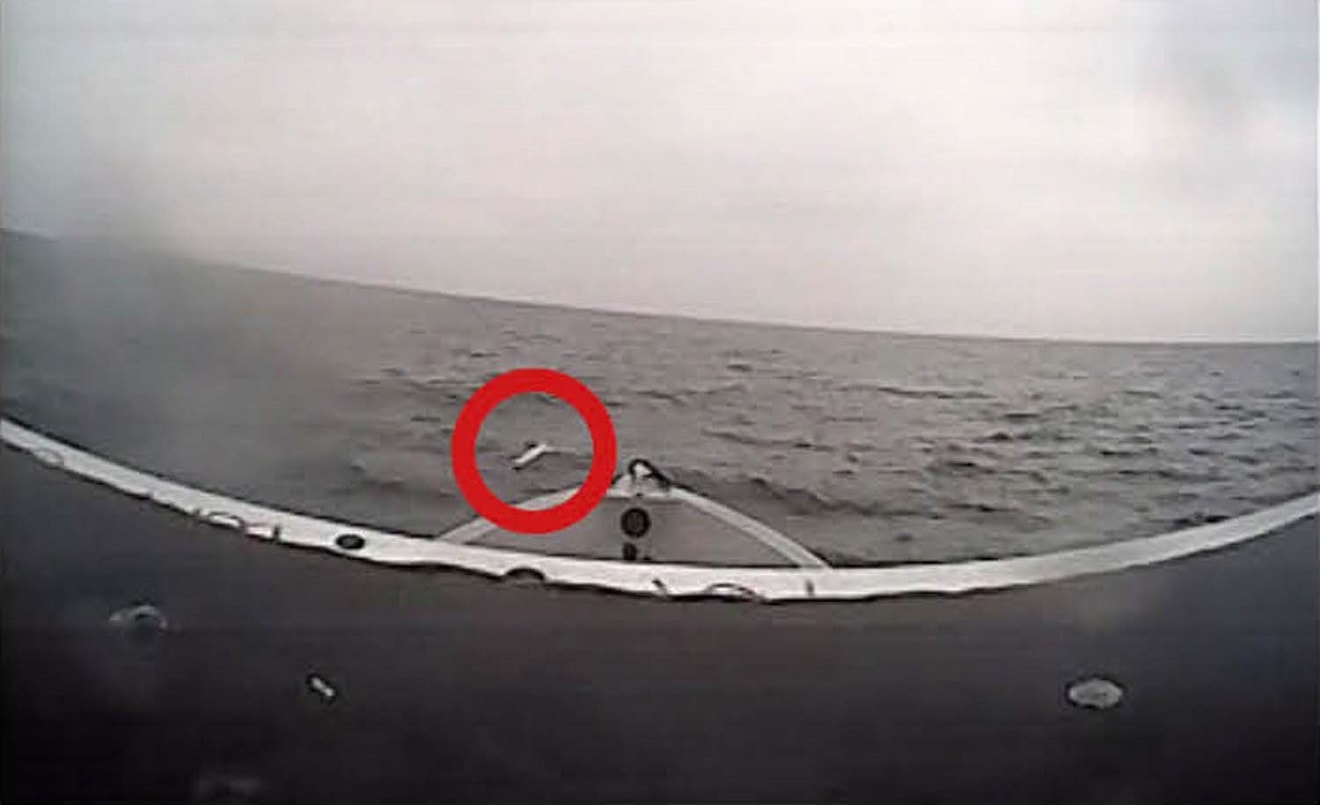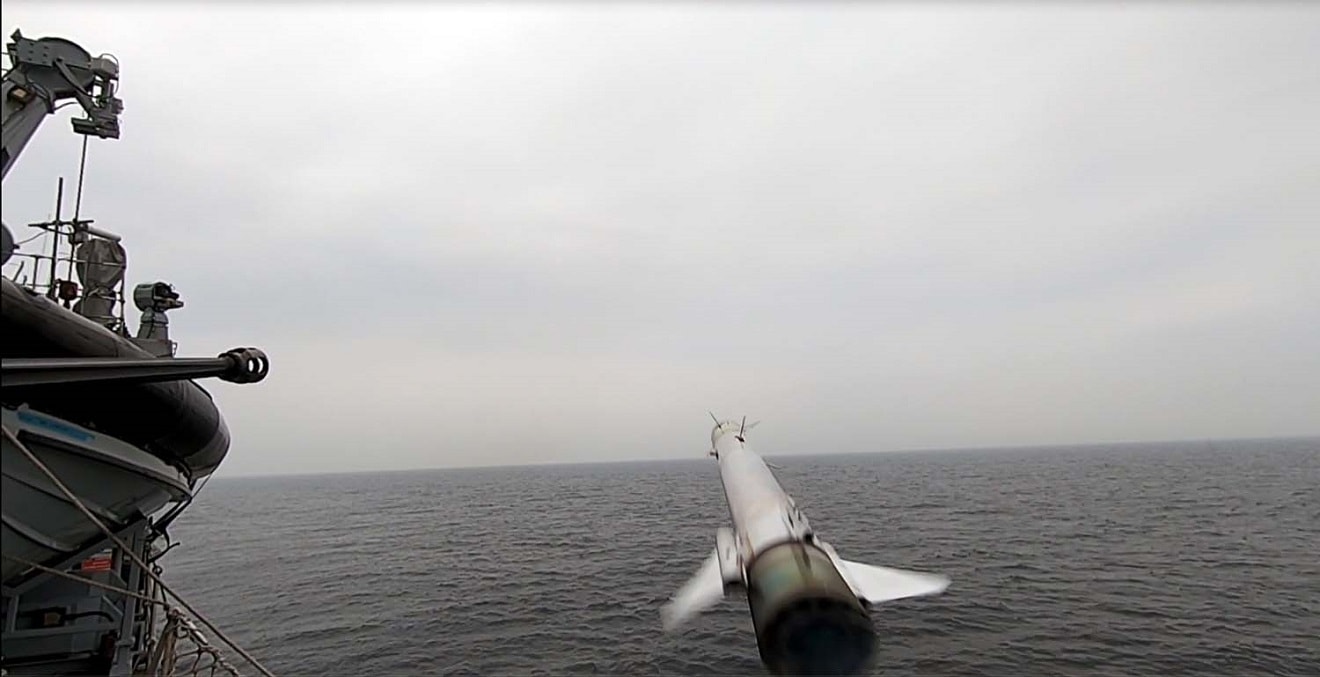Royal Navy conducts test of its new missile to defeat terrorists
Posted on
The Royal Navy announced on 16 July that it had successfully tested its new missile to defeat terrorists and suicide bombers.
HMS Sutherland fired four new Martlet missiles at a fast-moving speedboat off the Welsh coast to see whether the weapon could be launched from a ship as well as a helicopter.
Martlet – also known as the Lightweight Multi-role Missile – was originally designed to be fired by Wildcat helicopters to take out small boats which posed a threat to the Fleet, alongside the heavier Sea Venom for dealing with larger warships.
But recent incidents where both merchant and military shipping have been attacked by manned and unmanned surface and air systems armed with explosive devices underlined the risks faced by Royal Navy units deployed in danger zones.
All ships are armed with a series of machine-guns and Mini-guns (manually-operated Gatling guns) to fend off small craft, while some are also equipped with Phalanx automated guns which spew out a hail of bullets at incoming aircraft, missiles and threats on the surface.
The Royal Navy wanted to add to those defenses and turned to the new missile system, modifying it so a launcher could be fitted to the existing 30mm automatic gun.
Just five months after the idea was mooted, the Plymouth-based frigate was off the Aberporth Range at the southern end of Cardigan Bay facing a fast inshore attack craft tearing across the water.
After first proving that the gun could still fire accurately with the missile fitted – 120 rounds obliterated a large red ‘killer tomato’ target – and that the sensors behind Martlet could track its radio-controlled foe at ranges of up to five kilometers.
Finally, four missiles were fired – one to test the effect of the Martlet ‘blasting off’ from its launcher on the gun mounting and the side of Sutherland (the missile accelerates to one and a half times the speed of sound in an instant), three packed with telemetry to measure the missile’s accuracy (ordinarily the weapon carries a 3kg warhead).
All were recorded by high-resolution cameras so the team from manufacturers Thales and military scientists could analyze the effects in minute detail.
“The current defense against fast inshore attack craft, the 30mm gun, is highly effective for closer range engagements,” said Lieutenant Commander George Blakeman, HMS Sutherland’s Weapon Engineer Officer.
“By adding the missile to the gun mount it is anticipated it will extend the reach of the ship’s defensive systems – key to a successful defense against fast craft using swarm attack tactics.
“The Fighting Clan has always had a reputation for being at the forefront of innovation and we were delighted to be chosen to support this trial.”
The frigate’s Commanding Officer Commander Tom Weaver added: “The impressive result of this trial was achieved through the hard work and cooperation of a wide array of industry and defense partners and it was rewarding for Sutherland to have played such a key role in its success.”
Malcolm McKenzie from the missile’s manufacturer Thales said: “The rapid integration of Lightweight Multi-Role Missile on to the 30mm gun demonstrates how Thales can quickly develop cost-effective high capability solutions to meet the evolving threats faced by our naval forces.
“The success of the trial was a true team effort and delivery was only possible due to the outstanding contributions of HMS Sutherland crew.”




NEW: Amid an increasing threat from small boats used by terroists and suicide bombers, the Royal Navy has successfully tested the brand new Martlet missile.
HMS Sutherland fired four missiles at a fast moving speedboat off the Welsh coast. pic.twitter.com/Us9r3FnYDT
— Henry Jones (@hthjones) July 16, 2019
Subscribe to our newsletter
Promotions, new products and sales. Directly to your inbox.
